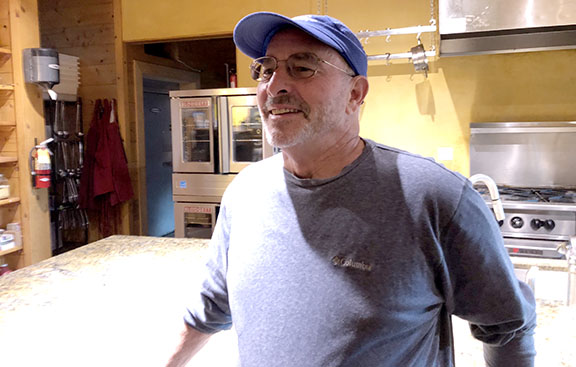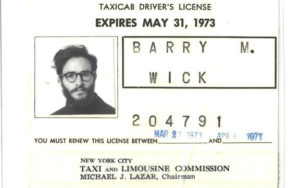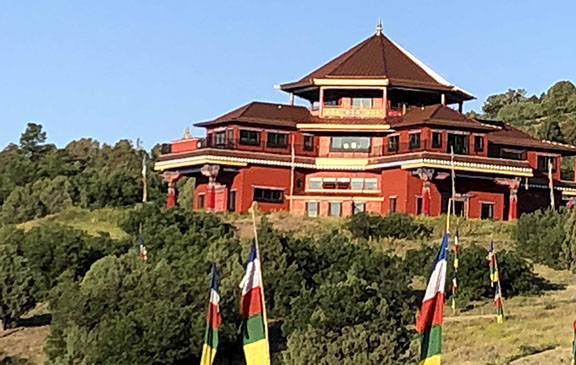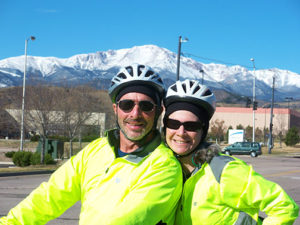 What did I do the summer of 2018? No, it wasn’t kayaking the Na Pali coast in Kauai. No, it wasn’t trekking to Machu Picchu in Peru. No, it wasn’t band camp in the Adirondacks. But, it was something just as adventurous, demanding, and engaging.
What did I do the summer of 2018? No, it wasn’t kayaking the Na Pali coast in Kauai. No, it wasn’t trekking to Machu Picchu in Peru. No, it wasn’t band camp in the Adirondacks. But, it was something just as adventurous, demanding, and engaging.
First, a little personal history…
I was part of the Integral Yoga community from 1968-1972 and lived at both the Integral Yoga Institutes at 500 West End Avenue and 227 West 13th Street. We were all so fortunate to be able to live and study and interact closely with Swami Satchidananda (Gurudev) in those early days. One thing that I learned from him was the true meaning of service, the essence of Karma Yoga. This has been with me for the past 50 years, and continued during the summer of 2018.
In 1968, after graduating from Columbia, I registered as a Conscientious Objector with my draft board in Phoenix. Instead of being shipped off to Vietnam, I performed two years of alternative service as a New York City welfare caseworker in the Bronx. Working closely with low income families, drug addicts, and aging seniors, I tried to provide much needed social services. At the same time, I lived and studied and worked at the IYI.

After completing my draft requirement, I drove a taxi and I volunteered to work at the IYI, becoming the Executive Secretary—another wonderful opportunity for service and for Karma Yoga. I helped initiate some of the initial community outreach efforts by teaching Yoga at a drug treatment program, at a prison, and at a school. These IYI community activities have continued and broadened over the years.
In 2002, after raising a family and having a successful career, I had the opportunity to serve in the Peace Corps, something that I had been thinking about since college. Since my background was engineering, I taught high school math in Namibia in Africa. My assignment was in Epembe, a small village in the north. I lived without electricity and water and transportation for two years. It was a very positive experience, especially working with the students and the community.
This summer, I had another opportunity for service. I volunteered for a month at a Buddhist retreat center. Let me describe the experience…
Whoa! A Tibetan Buddhist temple in the middle of the woods in Colorado? That’s as incongruous as a LOTUS temple somewhere in the middle of rural Virginia. Both absolutely beautiful. Both completely mind boggling.

Tara Mandala Tibetan Buddhist Retreat Center is near Pagosa Springs, Colorado, a beautiful part of Colorado. LOTUS is in Buckingham, Virginia, a beautiful part of Virginia. There is much commonality, even though the traditions differ. Actually, around Colorado are a number of interesting retreat centers, including Shambala, Maitreya Abbey, and Crestone. But, certainly, Tara Mandala is unique in its setting and facilities.
My summer included a month-long volunteer and retreat experience at Tara Mandala. It was an odd combination of summer camp, hut trip, vacation, camping, and a silent retreat—all mixed together. Some of it was expected, some of it was not. Although I’ve been on a number of weekend Zen sesshins over the years, I haven’t had a long silent retreat since Annhurst in 1970 as part of the New York IYI. Guess that shows my age!
For the month, I served as a volunteer, which means that I got room and board, plus participation in programs, in exchange for Karma Yoga (interestingly enough, they use the same term). My assignment turned out to be kitchen duty, which I’ll describe more in detail.
Tara Mandala (above); Light Of Truth Universal Shrine (below)

Here’s a typical day, not at all unlike the ashram schedule.
5 am – wake up
7 am – meditation
8 am – breakfast
10 am – study
1 pm – lunch
3 pm – kitchen
8 pm –meditation
10 pm – bedtime
Actually, the schedule seemed quite familiar to me, even though I haven’t done this in 50 years. Guess some things really stick with you, huh?
Tara Mandala has a very interesting population, as you might expect. There is a wide range in age and background in the community. I was the oldest! The youngest was a 19-year old girl right out of high school. The residents and participants came from all over the U.S., plus France, Australia, Germany, England, Denmark, Tibet—truly, a very interesting mix. The facilities are wonderful with a large common kitchen/dining hall, a temple with an extraordinary meditation hall and an equally extraordinary library that houses a number of rare Tibetan manuscripts, and a range of lodgings. As a volunteer, I stayed in a yurt with five other men. Quite comfortable. Warm during the day, cool and clear at night. Really, a beautiful environment.
Karma Yoga. As I mentioned, my assignment was in the kitchen. Running a commercial kitchen for 70 staff/volunteers/participants is a bit different than a home kitchen. I certainly learned a lot. There are three cooks on staff. I mostly helped with set up, preparation, and clean up. My meditation was scrubbing the pots and pans. I could do that forever. I took a Bodhisattva vow to clean all pots and pans, however numberless!
Like the ashram, the lifestyle guidelines included a vegetarian diet, no alcohol, no smoking, no marijuana, celibacy.
In addition to the normal structured schedule were a number of celebrations and ceremonies over the course of my stay. One was the celebration of the summer solstice. We all climbed up one of the peaks on the land in the early morning and offered a number of Tibetan prayers. It was a powerful experience. Another was the Tsog (Tibetan word for “gathering”) ceremony. This is an offering to the Green Tara, a female deity from the Tibetan pantheon. The ceremony was complete with chanting, drums, horns, bells, it seemed like something out of 11th century Tibet! All of the chanting was in Tibetan. The ceremony ended with a wonderful meal, again in the Tibetan Buddhist traditional style.
Here’s some more history. I’ve been interested in Eastern Studies for 50 years now—ever since college. Actually, the first book I picked up was The Way of Zen by Alan Watts in 1966. I distinctly remember where I bought it (a bookstore at 72nd and Broadway in NYC) and distinctly remember reading it (sitting on a green bench at the meridian of Broadway) and distinctly remember getting blown away. That was the beginning. Since then, my background has been mostly in Yoga and Zen, so I’m really a novice in the Tibetan Buddhist tradition. Being at Tara Mandala has been a wonderful opportunity to broaden both my knowledge and my practice.
At the heart, all these traditions point to the same truth (or ultimate reality). The form differs. Culturally Yoga is reflective of where it originated—in India— with its colorful pantheon of Hindu deities and epic mythology and poetry. Zen Buddhism, on the other hand, has more subdued colors, with a structure and form intended to emphasize the importance of realizing the interbeing of the practice community and of all things. And, Tibetan Buddhism is a sensual overload! Primary colors like blue, green, yellow, red abound. There are statues of Tara, drums, bells, incense, candles, Thankas (paintings) of Dakinis (female messengers of wisdom), Buddhas, and other deities. And this is all part of the practice. Quite a contrast!
 The photos of the Om symbol, in both Sanskrit and Tibetan, further illustrate the commonality and contrast in the traditions.
The photos of the Om symbol, in both Sanskrit and Tibetan, further illustrate the commonality and contrast in the traditions.
So, what did I do this summer? I guess I could say: nothing and everything! And what I did have was another wonderful opportunity to serve and another wonderful opportunity for Karma Yoga, as inspired by Gurudev for the past 50 years.
Postcript: Last time I was published in the Integral Yoga Magazine was the 2nd edition (early 1970). Coincidentally, it was an article on Karma Yoga! Some things never change, do they?!
About the Author:
 Barry Siva Wick lived and served (including as executive director) at the Integral Yoga Institute from 1968 to 1972. He, his then-wife Padma, and Kumar Kramer organized the first Integral Yoga retreat at Annhurst College in Connecticut. The success of this retreat inspired many more retreats that continue to present day at Satchidananda Ashram–Yogaville and other Integral Yoga centers.
Barry Siva Wick lived and served (including as executive director) at the Integral Yoga Institute from 1968 to 1972. He, his then-wife Padma, and Kumar Kramer organized the first Integral Yoga retreat at Annhurst College in Connecticut. The success of this retreat inspired many more retreats that continue to present day at Satchidananda Ashram–Yogaville and other Integral Yoga centers.
After leaving New York for Seattle in 1972, he and Padma organized a number of programs for Swami Satchidananda, including a retreat on Orcas Island and “Unity in Diversity,” an interfaith symposium. Although raised Jewish, Siva studied both Yoga and Zen for many years. His brother is a Zen teacher and has a center near Boulder, the Great Mountain Zen Center. Siva and Padma were blessed to host visits for Brother David, Rebbe Zalman Schachter, Prabhasa Dharma (Gesshin) Roshi, and Mother Tessa Bielecki over the years.
Siva had a long career as an engineer and he taught math and served in the Peace Corps in Africa when he was 60. He met Marcia, his current partner, quite literally, on a blind date—she is a blind skier. Together they maintain a very active lifestyle, enjoying biking, hiking, skiing, and doing triathlons. Siva says, “Gurudev’s simple teaching, ‘Easeful, Peaceful, Useful’ stays with me constantly.” (photo: Barry and Marcia out for a ride on their tandem bicycle with snow-covered Pikes Peak in the background.)


